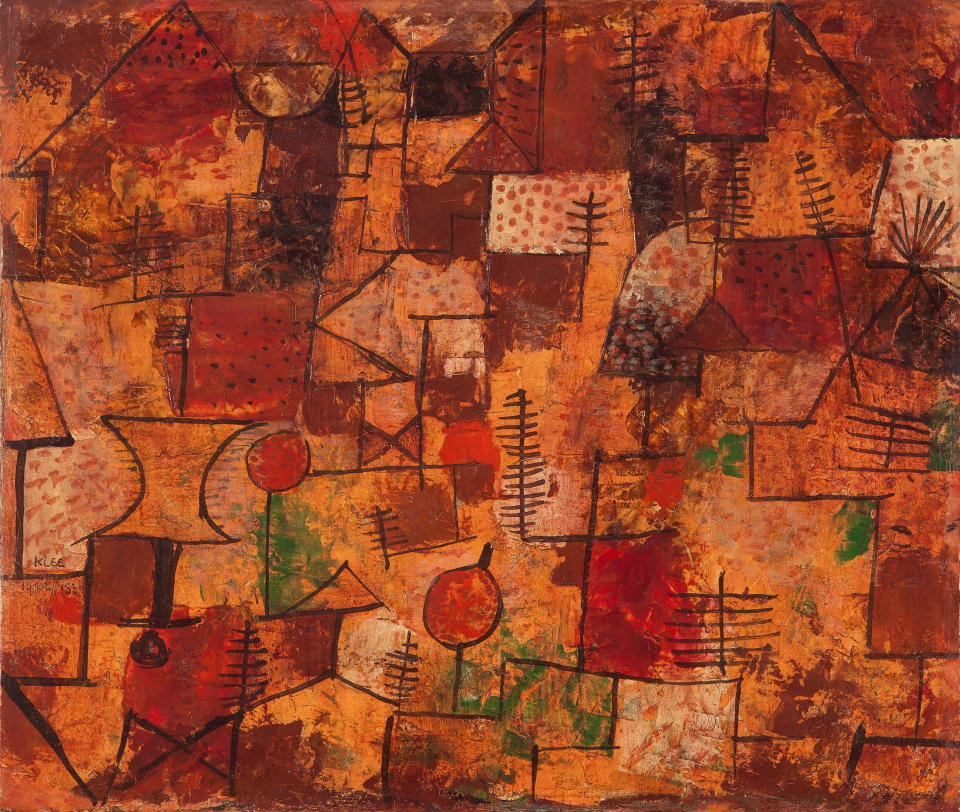Jugendstil-Bau > Ebene 1 > Galerie 17
Intro
Paul Klee addressed botanical themes in more than 1,000 works. For Klee, the plant world not only represented an inexhaustible stock of motifs, but also shaped his conception of art. By 1922 he had already spent two years teaching at the Bauhaus in Weimar, engaging in an intensive exploration of the fundamentals of painting.
Point, line, space, color, and contrast now form the starting point of his theoretical considerations, which are also reflected in his »Garden Settlement«. In this painting, he stretches an abstract framework of lines over a background of mottled colors. The figures traced by this abstract calligraphy are reminiscent of ciphers or symbols, but they also recall a series of adjoining gardens, and with it, elements which lend the natural an artificial order.
Time and again Klee, one of the most important artists of the 20th century, explored the interplay between artistic and natural creation. In his experiments in form and color, he assigned the artist a mediating role: just like nature, he creates according to laws, lending the intangible a solid form.
On loan from the State of Baden-Württemberg since 1964
Transkription
„Garden Settlement“– this is how Paul Klee titled his 1922 painting which he created using oil paint on cotton gauze impregnated with plaster and mounted on cardboard: An irregularly colored background consisting of various dark and warm shades of red, creamy white mottled with red, and areas of green, are all covered by an abstract line framework. Some parts of this framework evoke ciphers or letters, others resemble symbols.
For the artist, born in 1879 in Münchenbuchsee, Switzerland, the line represents a living, independent, and important element of his creative work. He describes the manifold expressions of lines in his 1918 essay on graphic art which outlines the key fundamentals of his artistic view of the world:
„Let us overcome the deadlock and get moving – this is the first act. (line). Soon, we will pause to catch our breath. (broken line or, in case of several pauses, segmented line): let us look back on how far we have already proceeded. (countermovement). Let us stop and contemplate the routes towards different directions. (bundle of lines).“
Since, for Klee, lines, not color, constitute the most important means for representing form and content, there is hardly any green visible in this „Garden Settlement“ because – according to Klee – „Art does not represent visible things, but awards visibility to things“. The painting creates its own reality and possesses its very own realistic dimension.
This point of view gives rise to conflict with the new rulers of Germany: In spite of his being one of the most important artists of the 20thcentury, National Socialists view Klee as a „degenerate artist“. They discharge him in 1933 from his professorship at the Düsseldorf Academy, and remove his work from all German museums four years later.
